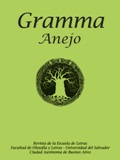LOS QUE VIVIMOS A LA VERA DEL RIACHUELO: CRÓNICA DE LA VILLA 21/24
Keywords:
Immigrants, Social Exclusion, Poverty, Mutual Help, Popular ReligiosityAbstract
The nonfiction story of the 21/24 slum, in the south of the city of Buenos Aires, begins with the arrival of the first immigrants and ends with today’s scourge of «paco» (cocaine paste), the poor man’s drug. The story was commissioned by the slum priests of the neighborhood, who needed that the account of three generations of immigrants not be lost, convinced that this particular community, in the most dangerous and populated slum of the city, has a special strength of resistance thanks to their popular religiosity. Archbishop Bergoglio, who visited the neighborhood often, admired this special strength and their communal organization. As Pope Francis, he preaches a poor Church for the poor and exhorts the excluded and «socially discarded», to organize in social movements, the way he saw this community do. The research and interviews of the principal actors of the story took two years. The chronicler pretends to filter indignation at the way the immigrants are rejected by the white population of the city, when they are real heroes. This case illustrates how a community of immigrants survives in a hostile city that excludes them, by leaning on popular religiosity, which gives them support, bond and sense of identity.Downloads
Published
How to Cite
Issue
Section
License
Works published in this journal are licensed under a Creative Commons Attribution-NonCommercial-
Works published under this licence may be shared, copied and redistributed in any medium or format. Adaptation, remixing, transformation and creation are also authorised. Both sharing and adapting are permitted as long as credit is given to the work appropriately, providing a link to the licence and indicating whether changes have been made. Commercial use of the material is also not possible.








